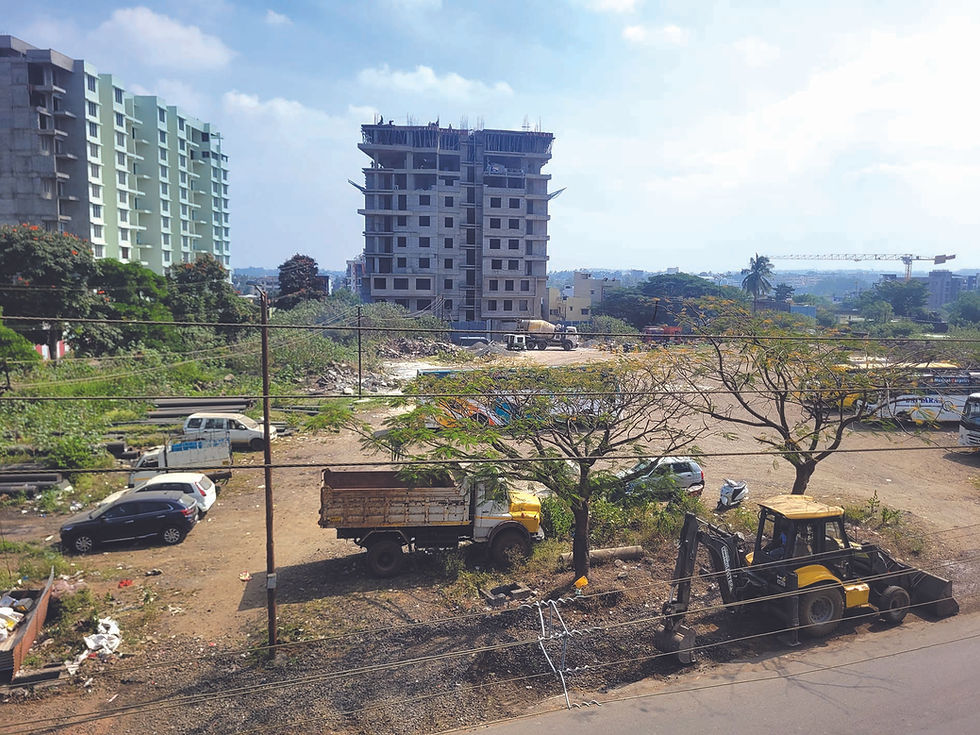The Battle for the Base
- Abhijit Joshi

- Nov 7
- 4 min read
Maharashtra’s local body polls will decide not just who governs its towns but which parties will dominate its politics in the future.

The announcement by Maharashtra’s State Election Commission of the schedule for the long-delayed local body polls saw the ruling Bharatiya Janata Party’s (BJP) campaign machinery in full swing. The party activated its committees and immediately mobilized its workers in stark contrast to the reactive strategies of its rivals.
The opposition - an uneasy collection of the Congress, Sharad Pawar’s Nationalist Congress Party NCP(SP), and Uddhav Thackeray’s Shiv Sena (UBT) - had sought to delay the polls. Raj Thackeray’s Maharashtra Navnirman Sena (MNS) had joined them in a grand rally, insisting that no election should be held until the voter lists were “cleaned up.” But within two days, the State Election Commission announced the dates, citing a Supreme Court directive that mandated the completion of local polls before January 2026.
Caught off guard, the opposition had little choice but to comply. The BJP, anticipating this moment, was already several steps ahead. Its State leadership had long begun appointing office-bearers, coordinating cadres and strengthening networks down to the booth level.
Local bodies are the arteries of governance. Whoever controls them controls the interface between citizen and state. Their reach offers political parties not just influence, but a ready-made network of money, manpower and mobilisation that can tilt future assembly and parliamentary contests.
Think of it as scaled-up society politics where residents band together to elect leaders who mediate with authorities. In civic terms, local corporators play the role of brokers of development whose collective sway decides which party claims credit or deflects blame.
Maharashtra’s history shows that power in India flows upward. The Congress long ruled through cooperatives, zilla parishads and municipal councils, while Sharad Pawar perfected this machinery into a personal empire. The Shiv Sena, with occasional Congress indulgence, captured Mumbai’s Brihanmumbai Municipal Corporation (BMC) by the early 1980s, turning Asia’s richest civic body into its citadel.
Local conquests
The BJP arrived late but adapted fast. Harnessing the organisational rigour of the Rashtriya Swayamsevak Sangh (RSS), it focused on small towns and semi-urban belts where others were weak. The aim was bottom-up dominance by winning nagar palikas, grooming local influencers and building a self-sustaining cadre. By the time Narendra Modi came to power in 2014, the party had perfected the art of local conquest. No election was too small; every ward, every gram panchayat mattered.
Its ultimate ambition remains clear: to wrest control of the BMC from the Shiv Sena and Uddhav Thackeray’s control- a prize that would symbolically and materially cement the BJP’s dominance over India’s financial capital.
For the opposition, the stakes could not be higher. After years of fragmentation in form of splitting of the Shiv Sena and the NCP, and the constant churn within the Congress, the local body polls are a test of survival. Losing further ground would mean forfeiting the ability to challenge the BJP in the 2029 assembly and Lok Sabha elections.
Daunting challenge
Their challenge is formidable. The BJP’s machinery is unmatched in reach and coordination, while opposition parties struggle to rebuild their grassroots presence. The voter list issue that Raj Thackeray has spotlighted betrays a deeper anxiety that its organisational weakness may translate into electoral irrelevance.
Adding complexity is the redrawing of political boundaries through the Supreme Court’s recent endorsement of 27% OBC reservation in local bodies. While this has removed a key legal obstacle to the polls, it has also reshuffled power equations. Caste arithmetic is being recalculated in wards and talukas across the state. For the BJP, which has successfully courted OBC leaders and voters in recent years, the new framework presents an opening to expand into previously resistant constituencies.
These polls are not merely about representation; they are referendums on governance. Flood relief, farm distress, water supply, and potholes will all become campaign fodder. The BJP hopes that its presence in the state and central governments will translate into credibility on development. The opposition, in turn, will highlight mismanagement, bureaucratic excess, and perceived neglect.
Many local bodies have been under administrative control for years due to delayed elections, eroding democratic accountability. Bringing them back under elected representatives will test not only the efficiency of the Election Commission but also the patience of voters who have long been governed by unelected bureaucrats.
Beneath the bustle of campaign rallies and social-media skirmishes, something more enduring is at stake. Control over local bodies is control over the sinews of the state through which money, influence, and loyalty flow. Congress once understood this, the Shiv Sena mastered it, and the BJP has now institutionalised it.
If the BJP succeeds, it will not simply win municipalities; it will entrench a political architecture that endures beyond individual leaders or alliances. For the opposition, even modest gains will be a sign that resistance is still possible.
For citizens, meanwhile, the polls are a chance to reclaim a measure of accountability, to demand that their local leaders deliver tangible improvements rather than grand promises.
As the campaign gathers pace, Maharashtra will witness a familiar choreography: roadshows, rallies, backroom alliance talks, and door-to-door canvassing. Every pothole and every flood relief package will become a talking point. Yet behind every local candidate stands a national strategy—a calculation for 2026, 2027, and beyond.
The fight for Maharashtra’s local bodies, then, is more than a civic contest. It is the battle for the basement of political power, the place from which empires in Indian politics are built.
(The writer is a political observer. Views personal.)





Comments